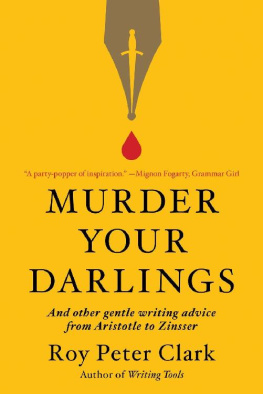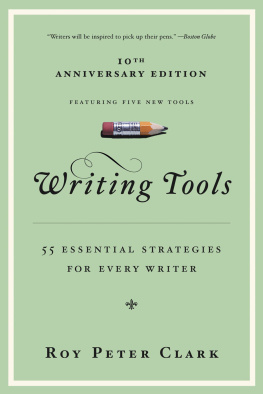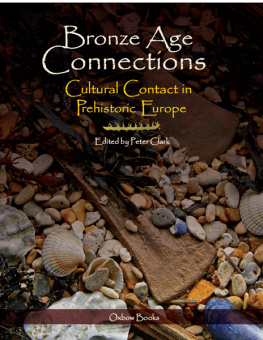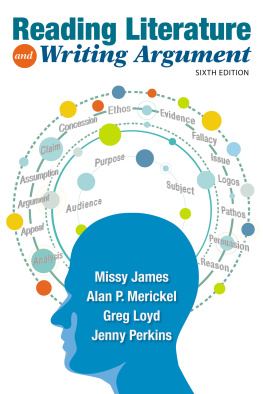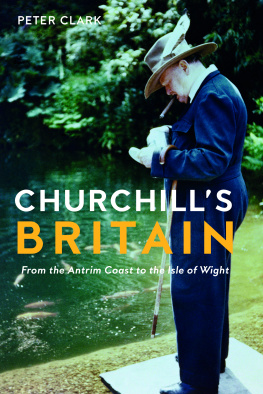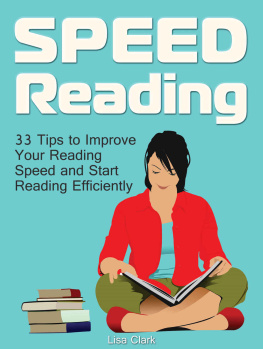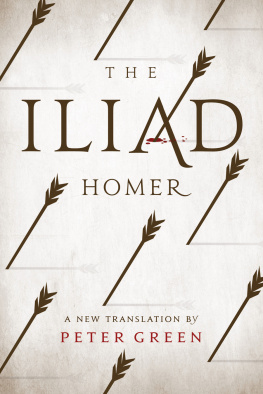In accordance with the U.S. Copyright Act of 1976, the scanning, uploading, and electronic sharing of any part of this book without the permission of the publisher constitute unlawful piracy and theft of the authors intellectual property. If you would like to use material from the book (other than for review purposes), prior written permission must be obtained by contacting the publisher at permissions@hbgusa.com. Thank you for your support of the authors rights.
Where do writers learn their best moves? They learn them from a technique I call X-ray reading. They read for information or vicarious experience or pleasure, as we all do. But in their reading, they see something more. Its as if they had a third eye or a pair of X-ray glasses like the ones advertised years ago in comic books.
This special vision allows them to see beneath the surface of the text. There they observe the machinery of making meaning, invisible to the rest of us. Through a form of reverse engineering, a good phrase used by scholar Steven Pinker, they see the moving parts, the strategies that create the effects we experience from the pageeffects such as clarity, suspense, humor, epiphany, and pain. These working parts are then stored in the writers toolshed in boxes with names such as grammar, syntax, punctuation, spelling, semantics, etymology, poetics, and that big boxrhetoric.
Lets get to work.
Please put on your new X-ray reading glasses so we can examine the titles of a couple of famous literary works. The first is The Love Song of J. Alfred Prufrock (1915), by T. S. Eliot. (The poet died in 1965, my senior year in high school, when I became the keyboard player in a rock band called T. S. and the Eliots.)
Prufrock is widely considered one of the great poems of the twentieth century, and I encourage you to read it for the first time, or again, to see if my claims about the title ring true. The poem is, most of all, a poignant reflection on the losses brought on by aging. The protagonist is torn between the lingering longings of youthromance, sexual energy, creativity, social prominenceand his sense of himself as an old man. He wonders if women at social gatherings, discussing Michelangelo, will notice him; he shrinks in stature and wears his pants rolled up at the cuffs; he worries whether his dentures will allow him to eat a peach. He looks back to see how his life has been measured out, a wonderful poetic phrase, and all he can see is coffee spoons.
Those are the dramatic and thematic outlines of the poem, but how did Eliot create them? If we can answer that question, perhaps we can begin to know some of the things he knew as a writer. Maybe there will come a time when we can reach for that knowledge and write a title to a text that draws on the same creative energy used by Eliot.
So what is the source of that energy?
My X-ray vision reveals that The Love Song of J. Alfred Prufrock is a title built upon a tension, a friction, a rub between two dramatically different phrases, two radically different kinds of language.
Write down some of the associations you make when you hear the phrase love song. My list contains courtship, romance, flirtation, beauty, serenade, youthful exuberance, hope, longing, music, poetry. The range of associationswriters call them connotationscan be wide. A Shakespeare sonnet is a love song: My love shall in my verse ever live young. But so is Double Shot (Of My Babys Love), by the Swingin Medallions.
So who is the persona created by Eliot to sing his love song? Does he have a poetic name such as Marvell, Wordsworth, or Longfellow? No: his name is J. Alfred Prufrock. Make a list of things that come to mind when you read or hear that name. My list includes banker, academic, attorney, businessman, bureaucrat. Nothing defies romance like a name that begins with a first initial followed by a full middle name. John A. Prufrock sounds more regular than J. Alfred Prufrock, which tiptoes near a parody of cold British fussiness. And then there is Prufrock, a name in full defiance of love song. Passion and fervor are neutralized by the empiricism of Pruf (proof) anchored to the hardness of rock. Read another way, that last name might divide as Pru-frocksomeone who wears prudish or prune-ish garb, a shrinking old man who wears his trousers rolled up so he wont step on them.
The tension can be felt in the very letters. The first phraselove songhooks up the liquid consonant l with the sexy sibilance of s. In contrast, Prufrock links a plosive p with the fricative k sound. Combined, the effect is like a great wave of sea and sand crashing onto a boulder-blocked shore.
See what happens when you put on those X-ray glasses? You are cured of the myopia of common reading. Beyond clarity, you gain an inner vision of literary effects, at its best psychedelic, kaleidoscopic, and 3-D. You are beginning to see as a writer.
Lets say youve learned that lessonthat a gifted writer may create a title in which two key elements collide. You now see titles in a new way. Another Nobel laureate, Thomas Mann, penned a novella entitled Tonio Krger, published in 1903. This was one of the first stories I read in college under the tutelage of a brilliant young scholar named Rene Fortin. (He also assigned Prufrock as part of our required reading.) He taught us how to pay special attention to moments of tension in a text.
Such tension was easy to find in the character of Tonio Krger, a young man torn between the influences of his German father and Italian mother. He imagines his life as an artist, a life of sensual creativity, the part he inherited from his mother. But he has elements of his father in him, tooa German banker whose life, however dull, offers the promise of stability and financial security.
I want you to feel that tension in Tonio Krger, lectured Fortin. Feel that collision between the coldness of his northern European heritage and the heat from the Mediterranean south. Its there before your eyes, there before you read the first word of the story. We had no idea what he was talking about, but he was right: there it was in the title itselfTonio Krger. Italian versus German. Long, open vowels versus umlaut and hard consonants. An artists first name versus a bankers last name. To my ears, Tonio has the sound of a romantic character in an Elizabethan play. Krger sounds like a form of currency.
X-ray reading not only gives you deeper reading knowledge, it also gives you a writers knowledge. Think now of all the authors who have created titles, popular and literary, in which two elements dont feel as if they belong together. My favorites include:
Paradise Lost
The Adventures of Huckleberry Finn
The Catcher in the Rye
To Kill a Mockingbird
Leda and the Swan
Dr. Jekyll and Mr. Hyde
The Postman Always Rings Twice
Whos Afraid of Virginia Woolf?
The Great Gatsby
But to those classic works of literature I would add popular ones such as the Harry Potter series. J. K. Rowlings powerful young wizard has an English kings nickname and a common tradesmans last name. How about popular reality shows such as Duck Dynasty and Amish Mafia? My favorite title, as you may know by now, is Buffy the Vampire Slayer,



